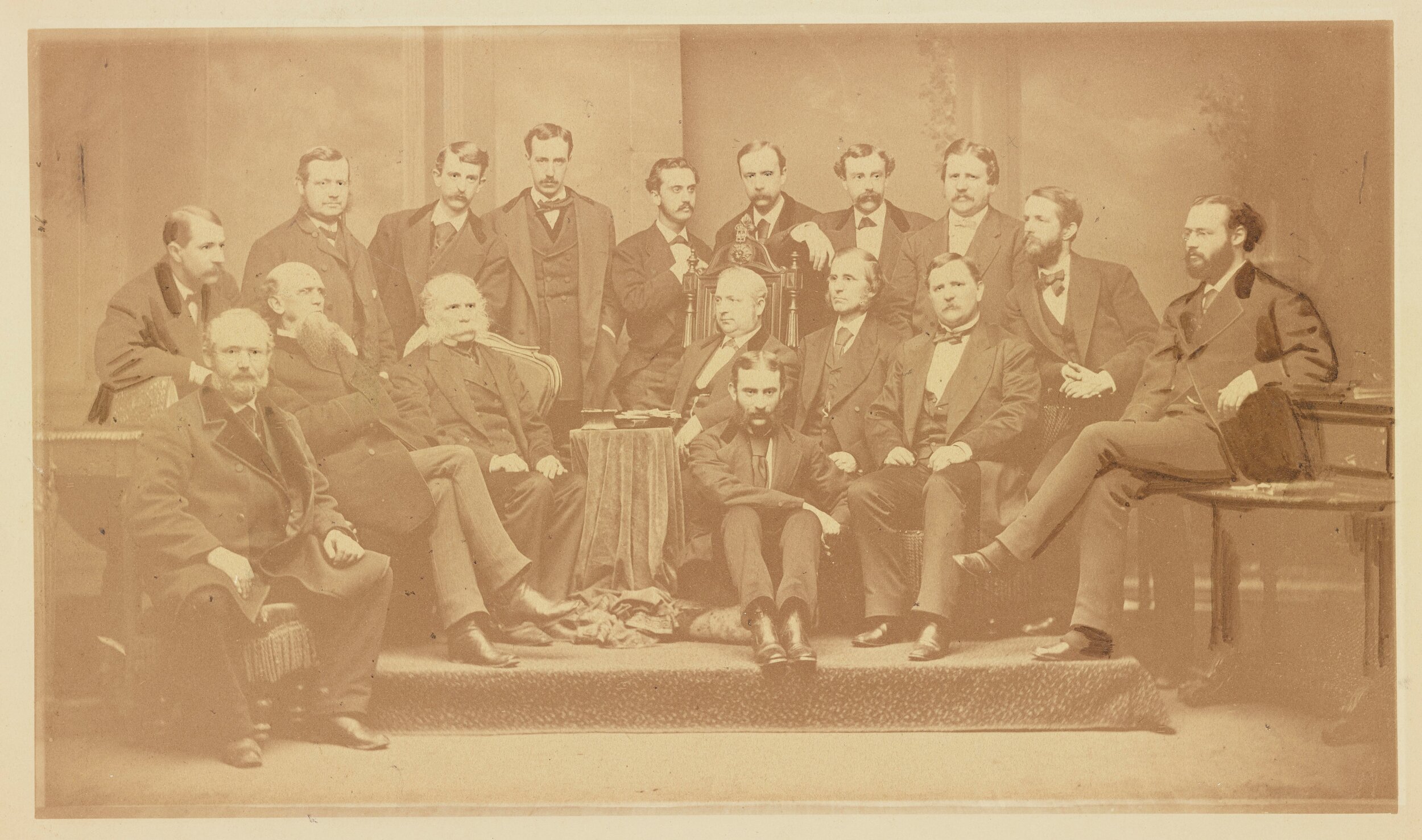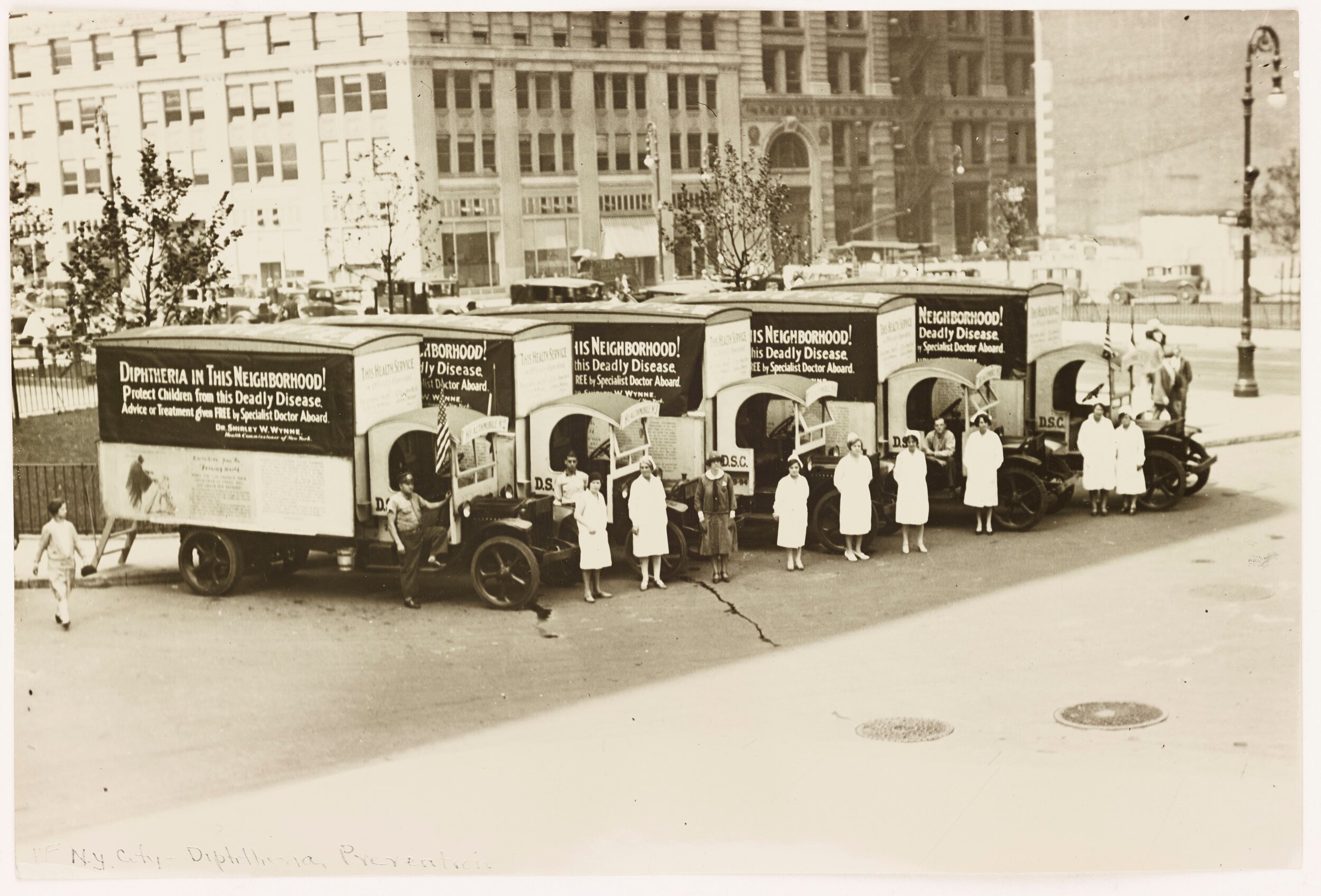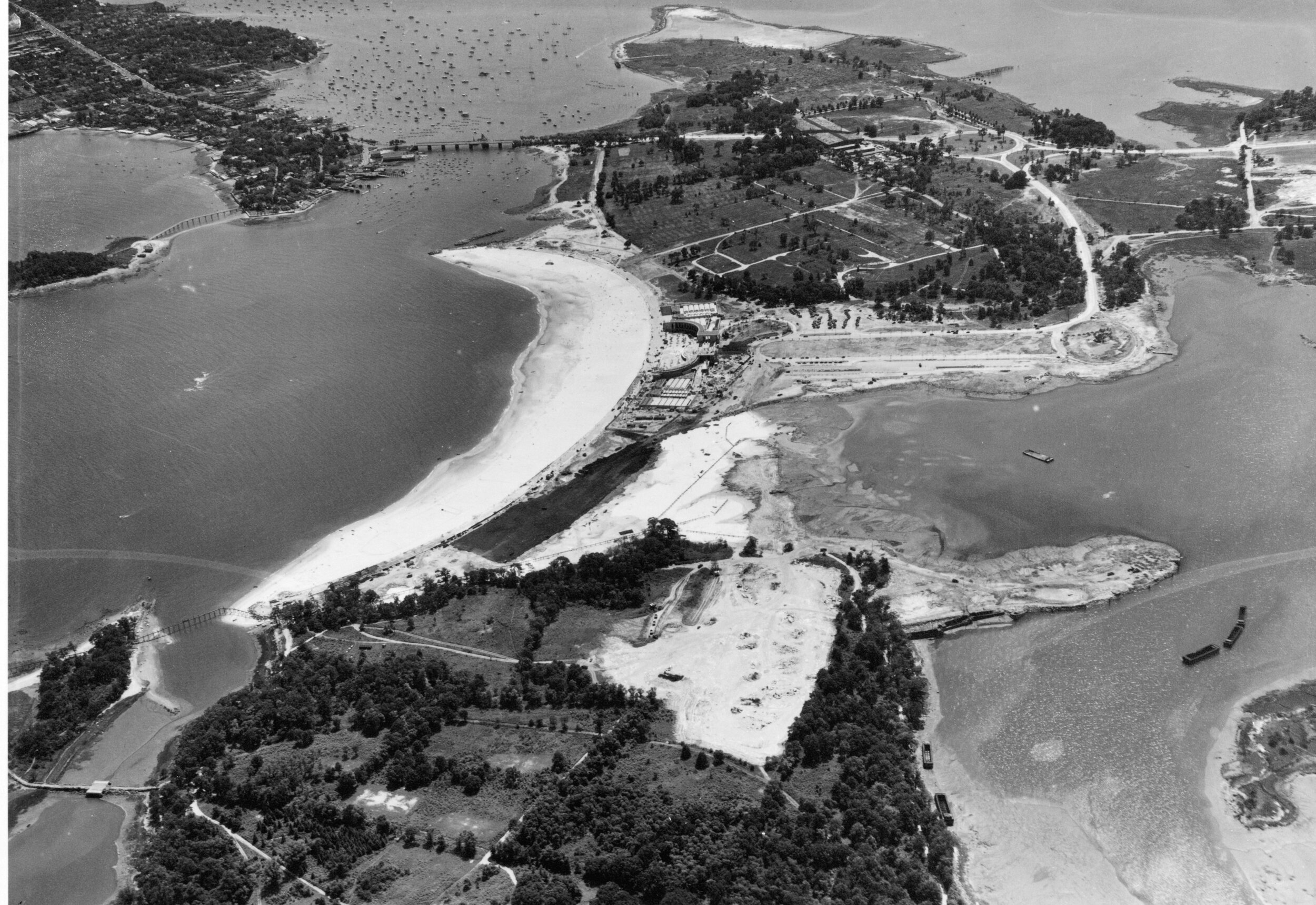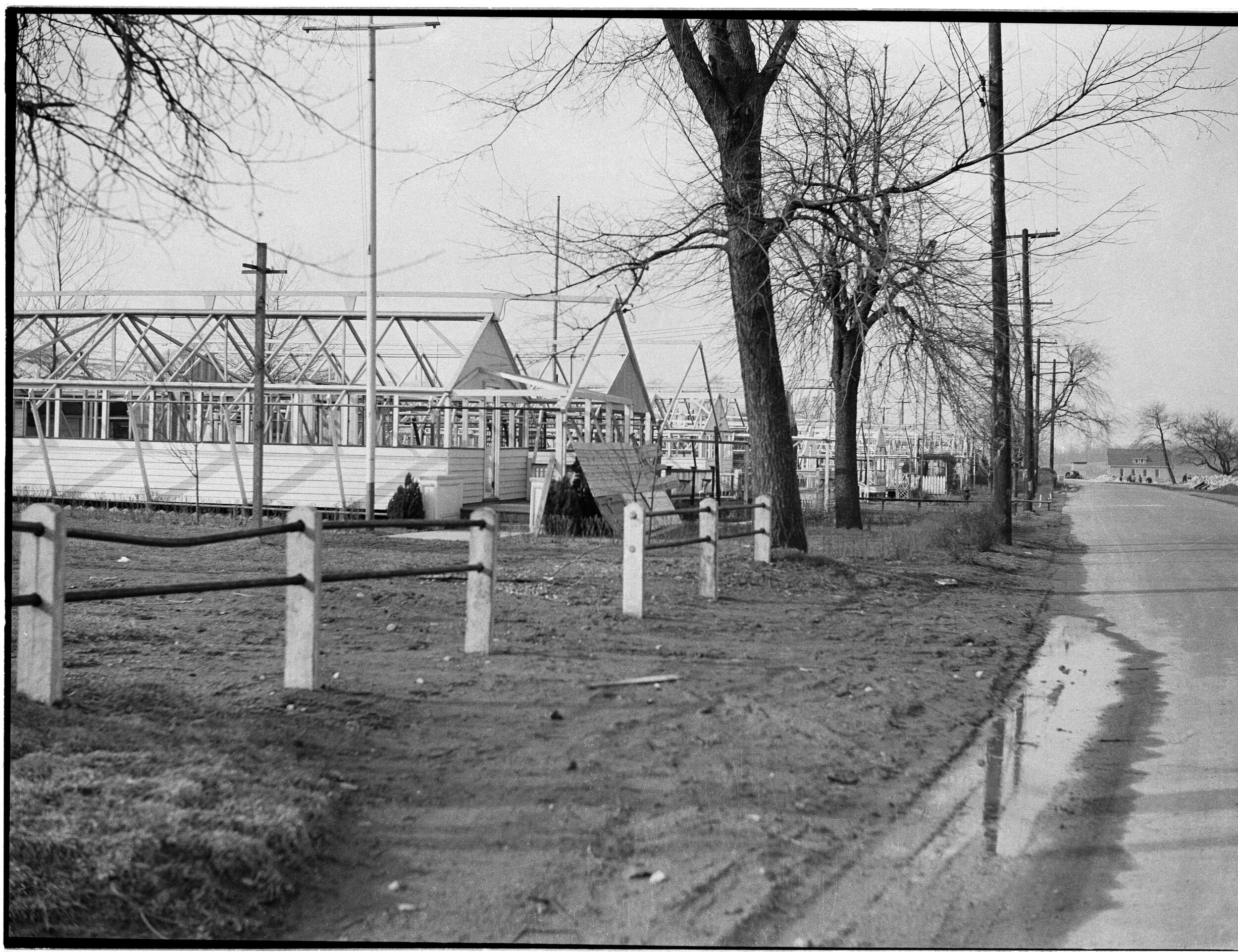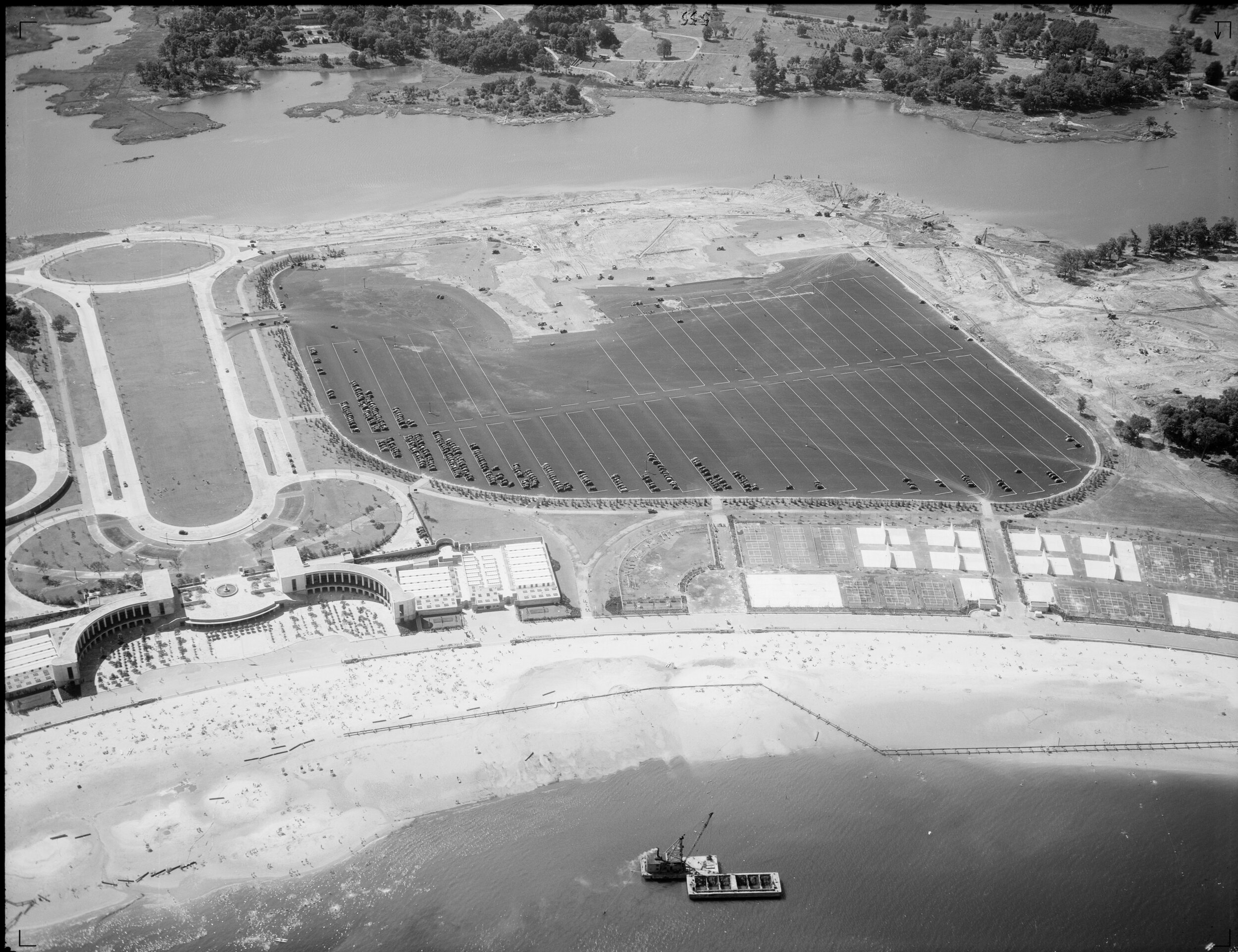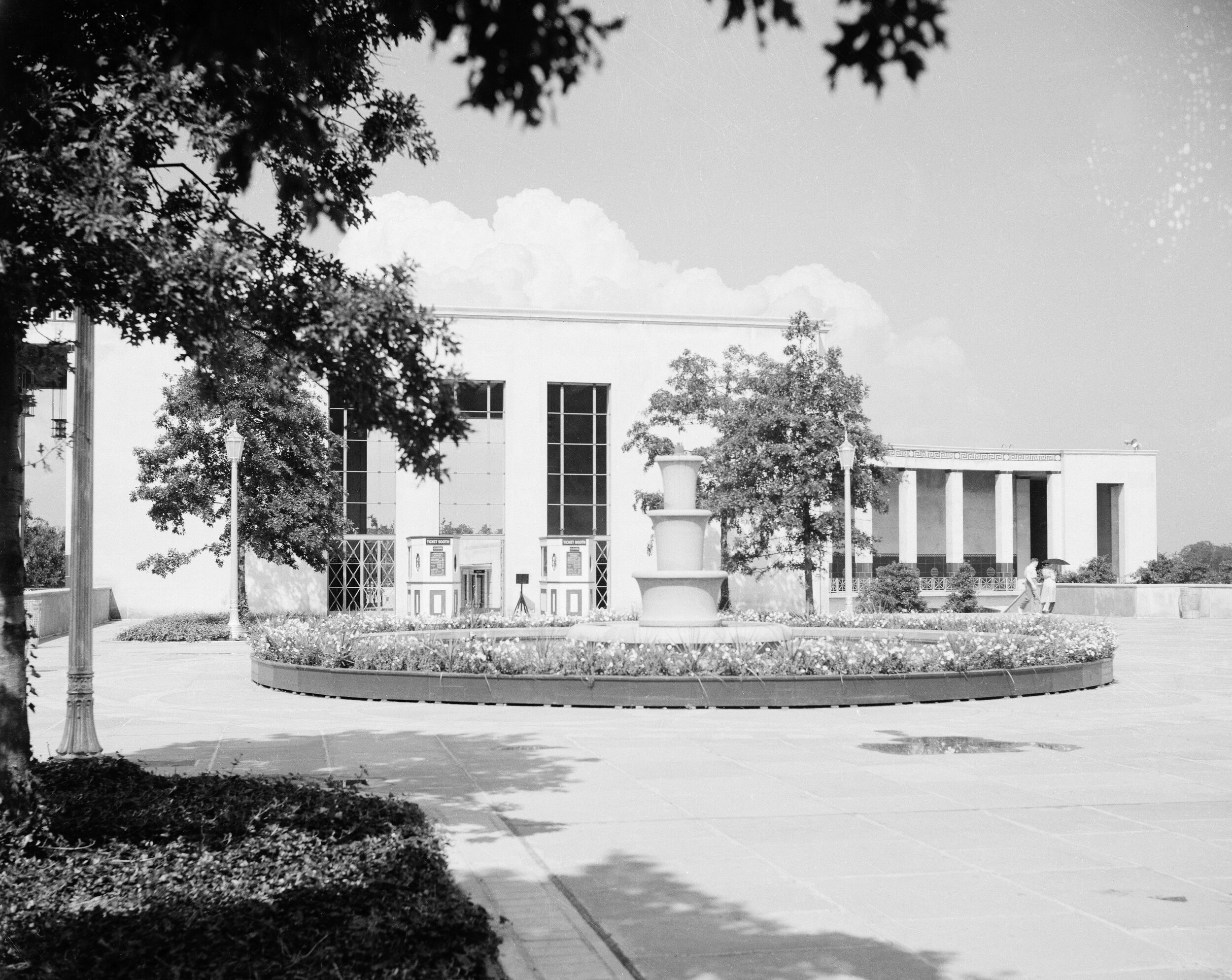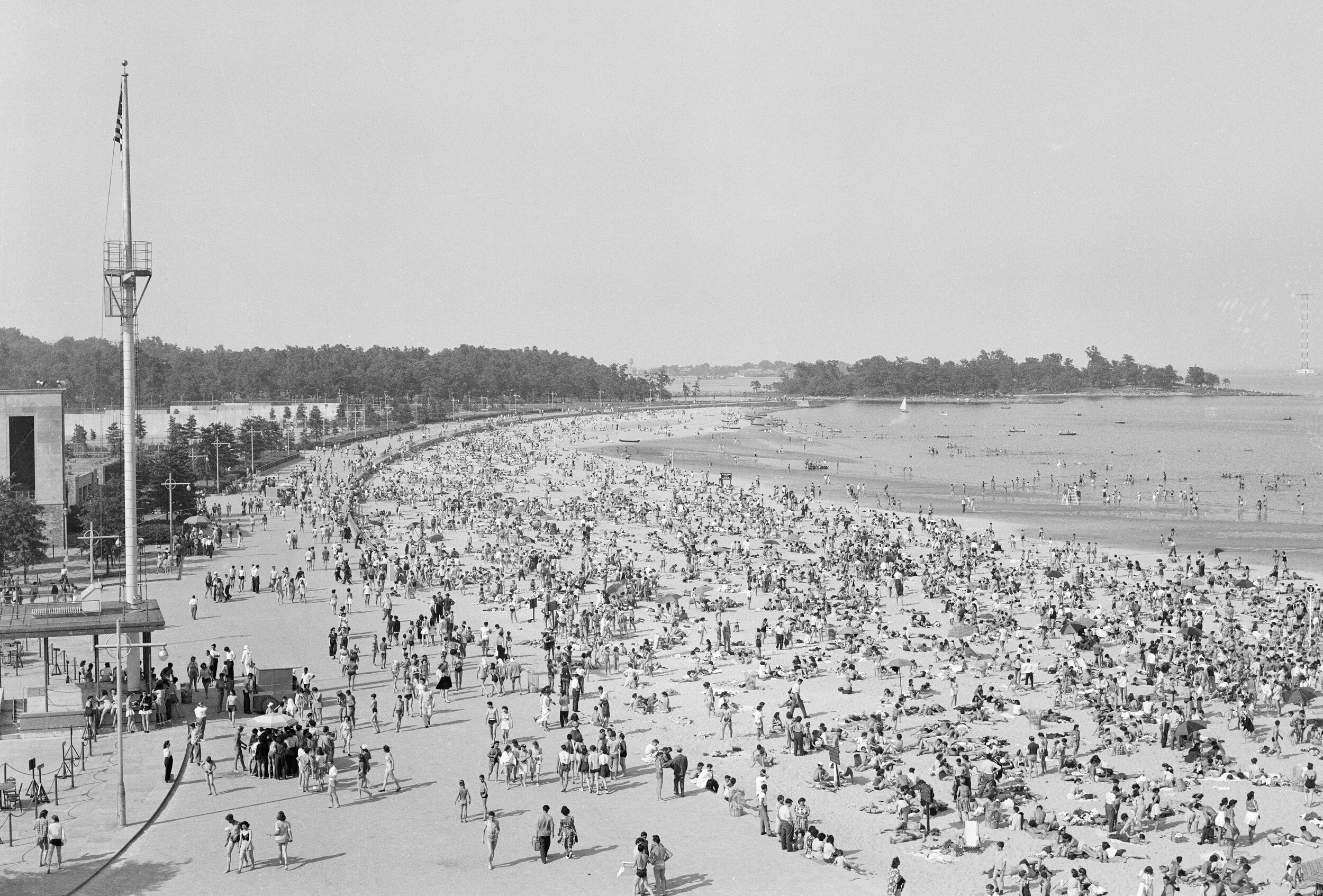More than 250 years ago, the sole responsibility of New York City's first public health workers, as they could be called, was keeping disease out of the city. It is a function essential to a rapidly-growing metropolis. Centuries later, we are again face-to-face with it, even as New York in 2020 bears almost no resemblance to the port city at the lower tip of Manhattan it once was.
Until the late 19th century, the role of public health was largely to react to outbreaks of diseases such as cholera and yellow fever. A Health Officer of the Port enforced the quarantining of ships coming into New York Harbor when there was a known or suspected contagion.
Group portrait of 17 sanitary inspectors, 1870-1873. NYC Municipal Archives.
In 1805, a designated board of the mayor and legislators was tasked with overseeing the health of city residents. Officials kept increasingly robust counts of the dead in an attempt to stem these diseases. The city's sanitary inspectors, part of the nascent Board of Health, worked to ensure the streets were free of garbage and rotting animals and vacant lots were unsoiled.
The population of Manhattan skyrocketed mid-century with the arrival of Irish and German immigrants, more than doubling the population between 1840 and 1860. Yearly outbreaks of cholera were exacerbated by tightly-packed housing quarters where these newcomers resided in neighborhoods such as the Five Points. Efforts to manage the health of the population became a more pressing issue for city government.
Aerial view of Hoffman Island, off Staten Island, once used to quarantine incoming immigrants, circa 1934-1945. Mayor LaGuardia Collection. NYC Municipal Archives.
The state created a new board of professionals to oversee health in New York City and its immediate surrounding areas in 1866. This was followed by a full-fledged Department of Health, staffed by doctors and other professionals in 1870. New York City opened the first city-controlled diagnostic laboratory in 1892, employing bacteriologists who mitigated outbreaks of infectious diseases over the years through testing and producing antitoxins and vaccines. The city’s public health lab continues this work to this day.
Additional waves of immigrants from eastern and southern Europe around the turn of the century and reforms in the social, educational and labor realms ushered in the public health nursing movement. In 1902, the New York City Department of Health created the first public health nursing program in the country. City nurses were installed at schools and paid home visits to millions of families and new mothers to tackle high infant mortality rates. Baby health stations popped up around the five boroughs. Public health nurses advised and examined pregnant women and mothers of young children, gave referrals, instruction on early child care and breast-feeding, information about access to city services and provided low-cost, quality milk.
Nurse visiting patient, possibly with tuberculosis, in tenement apartment, ca. 1910. Department of Public Charities Collection. NYC Municipal Archives.
Fleet of “healthmobiles” employed by the Department of Health in the late 1920s to promote information about diphtheria and offer free toxin-antitoxins. NYC Municipal Archives.
Through the Great Depression to the post-World War II years, federal and private money funded an expansion of health services. Physicians and nurses staffed new district health centers. More food inspectors examined more establishments. And the city increased resources focusing on child health by bringing dentistry into the fold of city services.
Mayor Fiorello La Guardia with Department of Health Commissioner John Rice touting the plunging city death rate to under 10 per 1,000 of population for the first time, 1939. Mayor LaGuardia Collection. NYC Municipal Archives.
Baby Health Station under elevated tracks at Gun Hill Road and White Plains Road, Bronx, circa 1940s. NYC Municipal Archives.
The Department of Health struggled and contracted under Mayor John Lindsay’s superagency reorganization plan and subsequent economic crisis of the 1970s only to take on renewed importance when HIV appeared and devastated the city. The city was able to secure outside funds to bolster staff and much-needed tracing, research and outreach programs. City health workers continued the uphill fight against HIV/AIDS on a community basis. They tackled tuberculosis outbreaks and lead poisoning among vulnerable populations into the 2000s.
Technicians at work in a Department of Health laboratory, circa 1940s. NYC Municipal Archives.
As the city launches its contact tracing and testing program for Covid-19, it is important to remember this work has a history in New York City. During the first decades of the 20th century, the Department of Health’s Dr. Josephine Baker was instrumental in tracking down asymptomatic carrier “Typhoid Mary” Mallon. Department employees, sometimes with the help of volunteers, have used detective methods of sorts to track, refer and follow up on cases of tuberculosis, venereal diseases and later, HIV/AIDS. At the threat of a smallpox outbreak in 1947, city health workers and volunteers vaccinated an astonishing 6.3 million New Yorkers in a month! In 1978, staff epidemiologists tracked the source of the city’s first outbreak of Legionnaires Disease.
The city continues to disperse health workers to New Yorkers’ homes, schools, restaurants and other businesses to monitor the city’s health on numerous fronts. Providing direction for New Yorkers coping with the Covid-19 pandemic is the latest example of the city’s public health workers fulfilling a centuries-old imperative.
